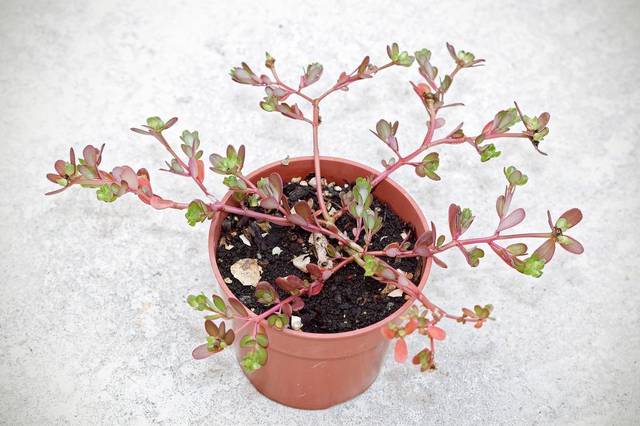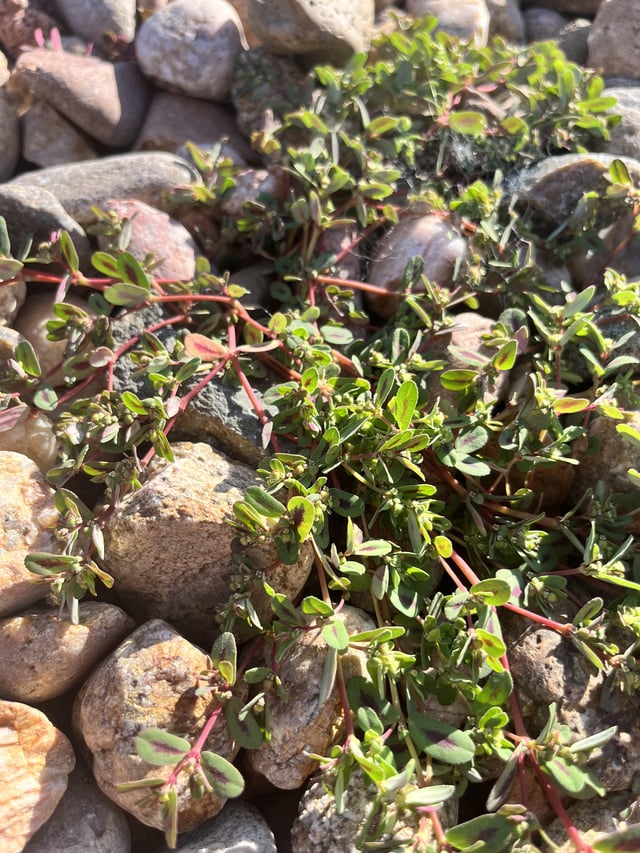As an Amazon Associate, I earn from qualifying purchases.
Weeds with red stems often include species like redroot pigweed and purslane. These weeds can spread quickly in gardens and lawns.
Red-stemmed weeds are common nuisances in various landscapes. Redroot pigweed, known for its robust growth, can overshadow other plants. Purslane, another red-stemmed weed, thrives in poor soil conditions. Both types can compete with garden plants for nutrients and sunlight. Identifying and managing these weeds early is crucial.
Effective methods include manual removal and using appropriate herbicides. Maintaining healthy soil and regular garden upkeep can prevent their spread. Recognizing these weeds by their distinctive red stems ensures timely action. Proper weed control helps maintain the beauty and health of your garden or lawn.
Red-stemmed Weeds
Red-stemmed weeds are easily identifiable by their distinct red stems. These weeds can be found in various environments. They are common in gardens, fields, and lawns. Their vibrant color makes them stand out among other plants.
These weeds often have broad leaves. Some may even produce flowers. The red stems can vary in shade, from bright red to dark burgundy. They are resilient and can grow in different soil types.
Red-stemmed weeds usually have a robust root system. This helps them anchor firmly in the ground. They can spread quickly, covering large areas. These weeds are adaptable to different climates.
They often have fast-growing tendencies. This makes them difficult to control. Some red-stemmed weeds are known to be invasive. They can outcompete native plants for resources.
Red-stemmed weeds thrive because they are highly adaptive. Their seeds can disperse easily. This allows them to colonize new areas quickly. They can grow in poor soil conditions. This makes them hard to eradicate.
These weeds often have a high tolerance to drought. They can survive in low-water conditions. This gives them an edge over other plants. Their quick growth cycle ensures they reproduce rapidly.

Types Of Red-stemmed Weeds
Pigweed is a common weed in gardens. It has red stems and green leaves. The plant grows quickly and can be invasive. Pigweed is tough to remove once established. It can be a big problem for farmers.
Redroot Amaranth has red stems and deep roots. This weed is often found in fields and gardens. It can grow very tall, sometimes over six feet. The leaves are edible but the plant can be hard to control.
Japanese Knotweed has thick red stems. It is very hard to get rid of once it starts growing. This weed can damage buildings and roads. It spreads quickly and can take over large areas. Japanese Knotweed is one of the most invasive weeds.
Identifying Red-stemmed Weeds
Red-stemmed weeds often have unique leaves. Leaves may be broad or narrow. Some leaves are smooth, while others are hairy. Leaf colors range from green to purple. This variety helps identify the weed type.
The stems of these weeds feel different. Some stems are smooth and shiny. Others are rough and hairy. The stem texture is a key feature. This helps in recognizing red-stemmed weeds.
Red-stemmed weeds have different root systems. Some weeds have shallow roots. Others have deep, strong roots. The root system affects how hard it is to remove the weed. This is important for gardeners to know.
Impact On Gardens And Lawns
Weeds with red stems steal nutrients from other plants. Healthy plants may struggle to grow. These weeds block sunlight from reaching other plants. Weeds can also spread quickly. This makes it hard for other plants to survive. They take up space that other plants need.
These weeds can harm the soil. They use up water meant for other plants. This can lead to dry soil. Weeds with red stems can also change the soil. They may reduce the nutrients available. This makes the soil less healthy for other plants.
Gardens look messy with these weeds. The red stems stand out and spoil the view. Lawns look unkept and less inviting. Removing these weeds can be time-consuming. Regular maintenance is needed to keep gardens and lawns looking nice.
Prevention Strategies
Healthy soil can prevent weeds. Add organic matter like compost to the soil. This improves soil structure. Healthy soil grows strong plants. Strong plants out-compete weeds. Regularly test your soil. This helps to know what nutrients are needed.
Mulch helps to suppress weeds. Use bark, straw, or grass clippings. Mulch blocks sunlight from reaching weed seeds. This prevents them from growing. Mulch also keeps the soil moist. This helps your plants to grow better.
Water your plants correctly. Deep watering is better than frequent shallow watering. This encourages deep root growth. Avoid watering weeds. Use drip irrigation or soaker hoses. This waters the plants but not the weeds.

Organic Control Methods
Managing weeds with red stems organically involves hand-pulling and mulching to prevent growth. Using natural herbicides also helps maintain healthy soil.
Hand Pulling
Hand pulling is a simple way to remove weeds. Make sure to pull the entire root. Wet soil makes it easier to pull the weeds. Check your garden often for new weeds. This method is safe for the environment.
Vinegar Solutions
Vinegar can help kill weeds. Use a spray bottle to apply vinegar to the weeds. Be careful not to spray other plants. Vinegar works best on sunny days. Repeat the process if needed. Always wear gloves when using vinegar.
Mulching
Mulching helps prevent weeds from growing. Use organic materials like straw or wood chips. Spread mulch around your plants. Mulch keeps the soil moist and cool. It also looks nice in the garden.
Chemical Control Options
Selective herbicides target specific weeds. They do not harm desired plants. Use them for red-stemmed weeds.
These products are effective. They ensure minimal damage to your garden.
Apply herbicides on a calm day. Wind can spread chemicals to other plants. Follow the instructions on the label.
This ensures proper use. Measure the correct amount for your garden.
Wear protective clothing. Gloves and masks protect you. Avoid contact with skin and eyes. Store herbicides in a safe place.
Keep them away from children and pets.
Long-term Management
Managing weeds with red stems involves consistent monitoring and timely removal to prevent their spread. Employing proper mulching and herbicide use can effectively control these persistent invaders.
Regular Monitoring
Regular monitoring helps catch weeds early. Early detection makes removal easier. Check your garden every week. Look for small red stems. Pull them out before they spread. Use a garden journal to track weed growth. This helps identify patterns.
Seasonal Maintenance
Performing seasonal maintenance is crucial. Clean your garden tools after each use. Apply mulch to suppress weed growth. Mulch keeps the soil moist and cool. It also blocks sunlight from reaching weeds. Rotate crops each season. This prevents weeds from adapting.
Professional Help
Sometimes, weeds are too tough to handle. Hiring a professional can be a smart choice. Professionals know the best methods for removal. They use safe and effective treatments. This saves you time and effort. Consider professional help for large infestations.

Frequently Asked Questions
What Are Common Weeds With Red Stems?
Common weeds with red stems include redroot pigweed, smartweed, and pokeweed. These weeds are often found in gardens and lawns.
How To Identify Weeds With Red Stems?
Identify weeds with red stems by their distinct red or reddish-purple stems. Also, check their leaves and growth patterns for better identification.
Are Weeds With Red Stems Harmful?
Some weeds with red stems can be harmful to plants. They compete for nutrients, water, and space, affecting the growth of desired plants.
How To Control Weeds With Red Stems?
Control weeds with red stems by regular weeding, using mulch, and applying appropriate herbicides. Manual removal is also effective for small infestations.
Conclusion
Understanding weeds with red stems can help maintain a healthy garden. Identifying and managing these weeds is crucial. Keep your garden thriving by recognizing these common culprits. Regular maintenance and proper care will ensure your plants flourish. Stay vigilant and enjoy a beautiful, weed-free garden year-round.

